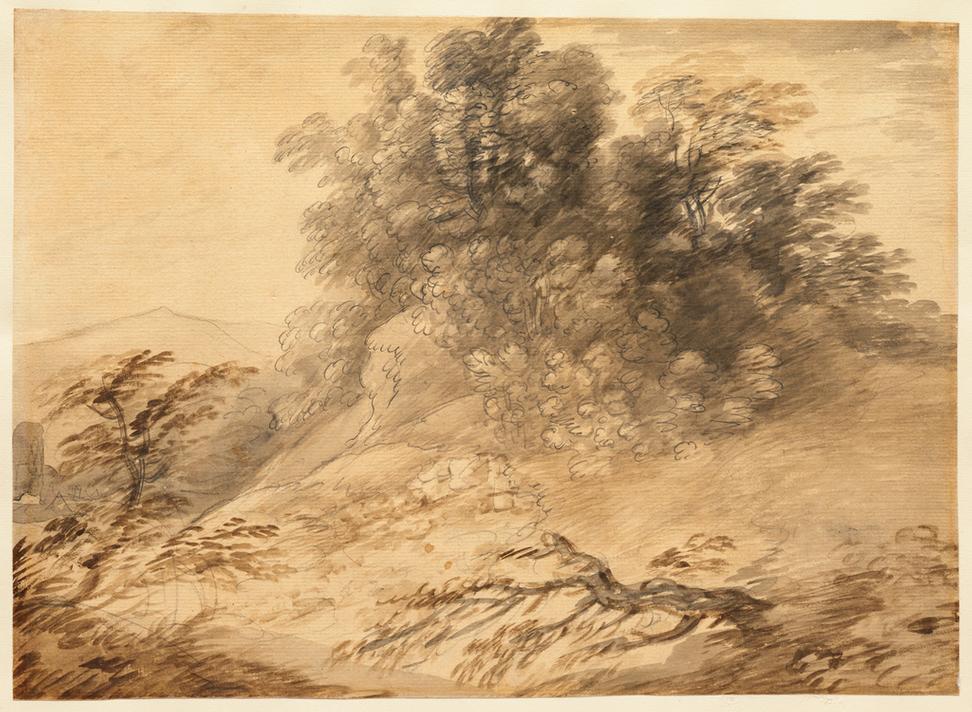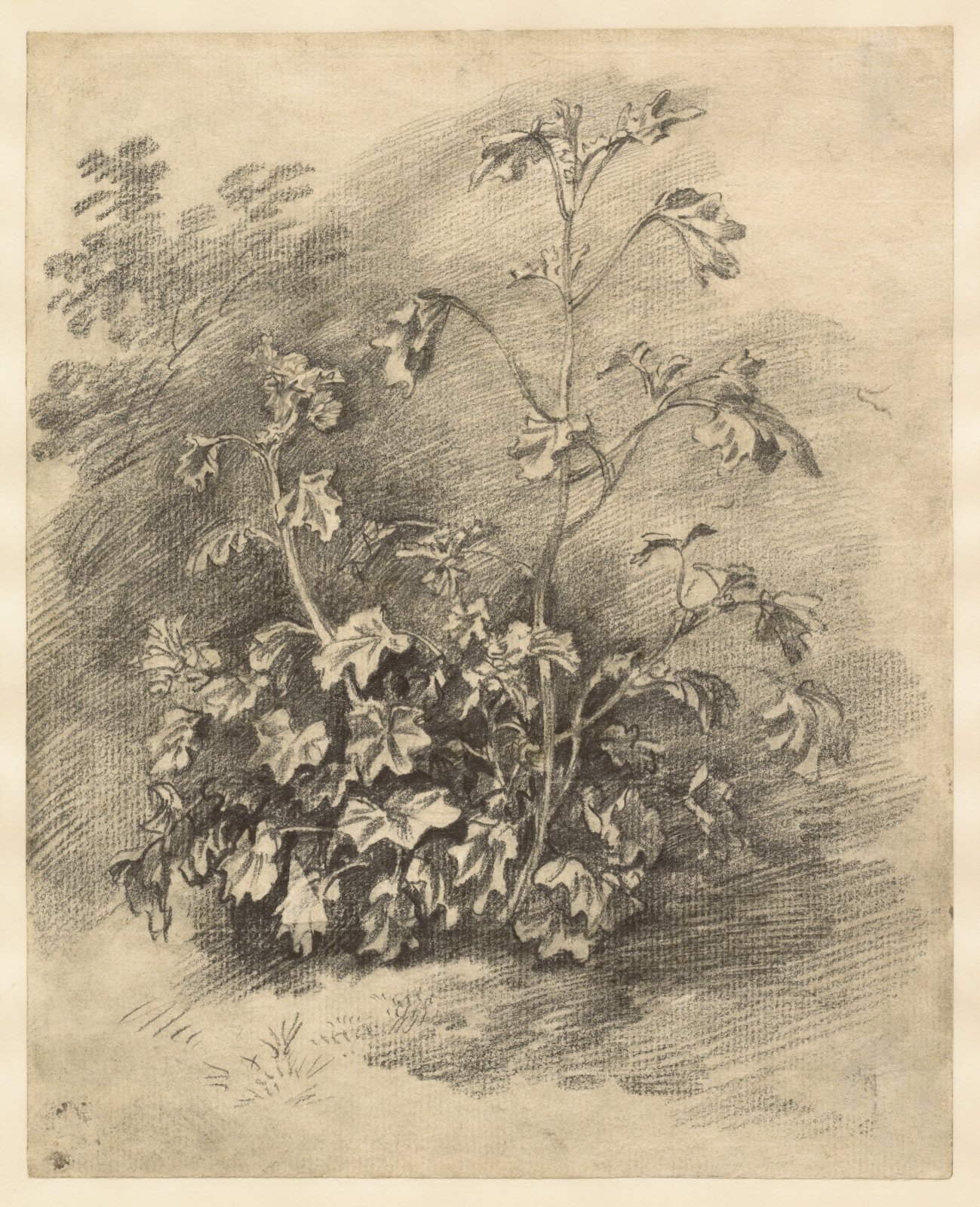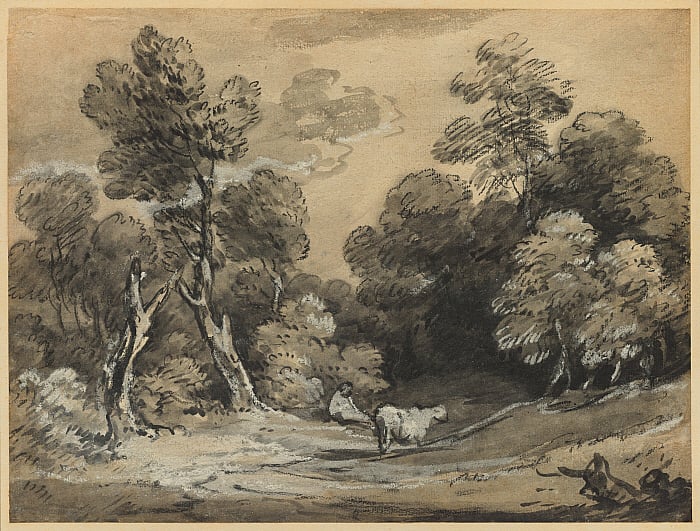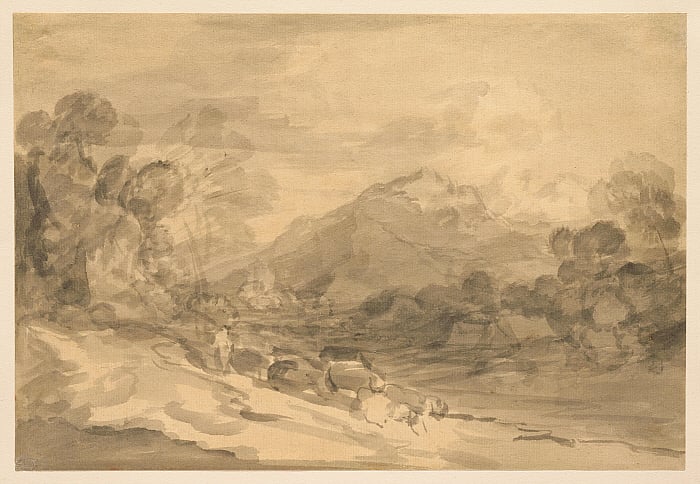December 1, 2018 – March 17, 2019
Thomas Gainsborough: Drawings at the Clark, on view from December 1, 2018 – March 17, 2019, marks the first time that the Clark’s entire collection of rarely exhibited Gainsborough drawings will be shown together. The installation includes a suite of fourteen sheets from the Manton Collection of British Art, along with two works acquired by Sterling and Francine Clark. Gainsborough’s scenes of the English countryside are presented in conjunction with Turner and Constable: The Inhabited Landscape, opening on December 15, 2018. That exhibition explores the wide-ranging landscapes and seascapes of John Mallord William Turner (English, 1775–1851) and John Constable (English, 1776–1837), who built upon the landscape tradition that began to gain recognition through Gainsborough’s work.
The Manton Collection of British Art is considered one of the greatest collections of British art assembled in the last fifty years. In 2007, the Manton Foundation donated more than 250 works to the Clark, constituting the most significant addition to its collection in the Institute’s history.
“This special installation, along with our Turner and Constable exhibition, is a wonderful opportunity to highlight some of the many treasures of our Manton Collection of British Art,” said Olivier Meslay, Hardymon Director of the Clark. “The Gainsborough installation reveals the breadth of the artist’s approach to nature and celebrates his fascination with mixed media and innovative techniques. These are truly remarkable drawings, and it is a true pleasure to be able to share the full collection with our visitors for the first time.”
Abounding with foliage, cottages, and pastoral figures—shepherds driving flocks of sheep and cows drinking from pools or streams along meandering paths—Gainsborough’s landscapes present an idealized view of country life. Rather than depicting specific locales, his drawings evoke the gentle woodland and heath of his native Suffolk in the east, and, later, the mountainous Lake District of Cumbria in the northwest.
Early in his career, Gainsborough sometimes consulted detailed drawings of flora, such as Study of Mallows (mid- to late 1750s), when completing the foreground foliage of his paintings. Gainsborough added depth to the clump of mallow by blending his soft graphite strokes with a stump, a tool made of tightly rolled paper or felt. This drawing likely came from one of the artist’s sketchbooks, which were dismantled for sale after his death.

Thomas Gainsborough (English, 1727–1788) Landscape with a Clump of Trees on a Hillock, early 1760s. Watercolor and graphite, with coating, on paper, 10 1/4 x 14 3/16 in. Clark Art Institute, Gift of the Manton Art Foundation in memory of Sir Edwin and Lady Manton, 2007.8.66
In Landscape with a Clump of Trees on a Hillock (early 1760s) Gainsborough renders the characteristics of trees with a looser handling than in

Thomas Gainsborough (English, 1727–1788) Study of Mallows, mid- to late-1750s. Graphite with stumping on paper, with gum fixative, 7 5/8 x 6 1/8 in. Clark Art Institute, Gift of the Manton Art Foundation in memory of Sir Edwin and Lady Manton, 2007.8.65Study of Mallows. The withered trees in the foreground are drawn with calligraphic strokes of watercolor. Scalloped graphite lines define the leafy contours of the group of trees at center, strengthening the sketchy mass of light and shadow formed by layered sweeps of wash.
In the early 1770s, Gainsborough introduced materials traditionally associated with oil painting into his drawings. After establishing this composition with watercolor and thickly applied opaque pigments, he stabilized the sheet with a coating of water mixed with gum arabic, a hardened sap derived from the acacia tree. Once dry, he coated the drawing with three layers of mastic gum dissolved in turpentine, a common solvent for oil paints and varnishes.
Thomas Gainsborough (English, 1727–1788) Wooded Landscape with a Cottage and Cows, mid-1770s. Black chalk, watercolor and gouache on paper, 8 7/16 x 11 9/16 in. Clark Art Institute, Gift of the Manton Art Foundation in memory of Sir Edwin and Lady Manton, 2007.8.68

Wooded Landscape with Herdsman and Cow early 1780s
Brush and black and gray wash with black and white chalks on cream laid paper, fixed with skim milk and/or gum Sheet: 10 1/2 x 14 in. (26.7 x 35.6 cm)Gift of the Manton Art Foundation in memory of Sir Edwin and Lady Manton, 2007 2007.8.80
Wooded Landscape with Herdsman and Cow (early 1780s) epitomizes the artist’s inventive mixed media technique. A sense of rapid handling pervades the composition—a few lines and smudges of chalk define the figures while short, multidirectional strokes describe surrounding foliage. However, the layered use of wash, chalks, and fixative reveals a methodical approach. Gainsborough applied gray ink washes to form a tonal foundation for shadows, which he drew in black ink and chalk; the latter medium was then dragged and smoothed to the desired effect. Throughout the composition, he scattered broken lines of white chalk that serve as highlights in combination with areas of untouched paper, further indications of the artist’s forethought.
During the summer of 1783 Gainsborough visited the Lake District of northwest England. The shimmering lakes, valleys, and high peaks of the region attracted artists and tourists in pursuit of its scenic views.

Thomas Gainsborough
English, 1727–1788
Rocky Wooded Landscape with Herdsman Driving Cattle along a Valley and Distant Mountains
c. 1783
Brush and gray wash on beige laid paper
Sheet: 8 5/16 x 12 1/8 in. (21.1 x 30.8 cm)
Gift of the Manton Art Foundation in memory of Sir Edwin and Lady Manton, 2007
2007.8.72
Rocky Wooded Landscape with Herdsman Driving Cattle along a Valley and Distant Mountains (c. 1783), composed entirely of freely brushed, transparent layers of ink wash, is reminiscent of the picturesque vistas he encountered there. During this period, artists favored wash when carefully recording features of a recognizable landscape. Gainsborough, however, used the medium for painterly expression to represent an unidentifiable mountain that was likely made from memory.